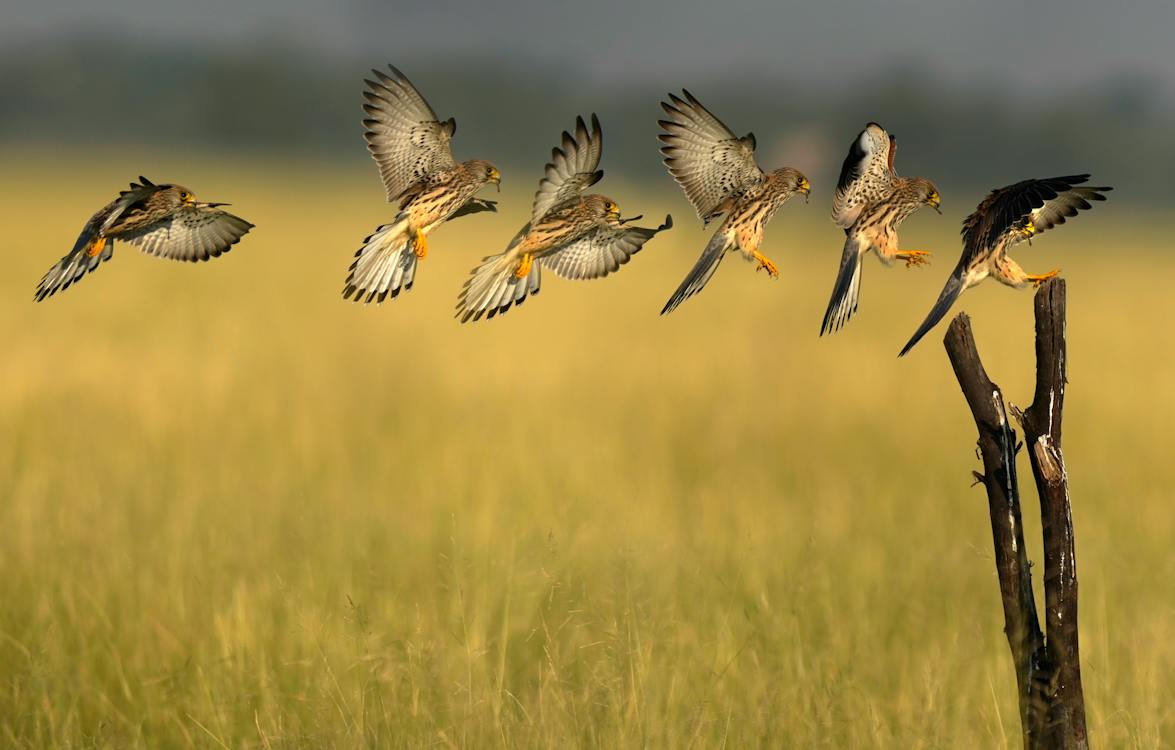The Lesser Kestrel, also known as Falco naumanni, is a small falcon that breeds from the Mediterranean across Afghanistan and Central Asia. It migrates during summer and spends winter in Africa, Pakistan, India, and Iraq. It looks very similar to Common Kestrel.
The falcon species was first discovered by German botanist and ornithologist Johann Gottlieb Fleischer in 1818. Despite sharing most of its physical characteristics with the Common Kestrel, the two are not closely related. According to naturalists, the morphological similarity shared with the Common Kestrel is still puzzling.
The population of Lesser Kestrel is threatened by pesticide, which is usually used by humans to reduce poison prey, and other human disturbances such as demolition of old buildings used as nest sites and loss of habitat brought by agriculture intensification. Locals have exhausted their efforts to preserve the population of Lesser Kestrel by providing artificial nests and reintroducing their species to some areas to stabilize their population within their range. These conscious efforts lead to a favorable classification by the International Union for the Conservation of Nature (IUCN) Red List, which is Least Concern.
Its eight levels of scientific classification are as follows:
Domain: Eukaryota
Kingdom: Animalia
Phylum: Chordata
Class: Aves
Order: Falconiformes
Family: Falconidae
Genus: Falco
Species: F. naumanni
The physical characteristics of a Lesser Kestrel
This small falcon measures between 30 and 36 cm. It has long, pointed wings and a long tail that possesses a broad black terminal band. Sexual dimorphism exists in this bird species—male Lesser Kestrels have chestnut back and blue-grey crowns, neck, rumps, and tails. Their bellies are creamy pink lined with brown streaks. The eye rings are bright yellow while their feet are orange-yellow. The undersides of their wings are white lined with black tips. On the other hand, female Lesser Kestrels have brown backs, heads, and pale bellies. Their wings are light with dark streaks and tips.
The distribution and habitat of Lesser Kestrels
Lesser Kestrels breed in Europe, northern Asia, and central Asia. They are migratory species, spending the winter season in Africa, particularly in southern Sahara. From February to April, they are abundant in southern Kenya and northern Tanzania. They take refuge in habitats such as bushy, wooded, and open grasslands and cultivations. They can also be seen in mountain slopes, gorges, rocky terrains, ravines, and other open areas.
The behavior of a Lesser Kestrel
As a member of the Falconidae species, the Lesser Kestrel flies very fast, often accompanied by noisy wingbeats, but are usually softer and deeper than the Common Kestrel.
They are gregarious birds, commonly found in loose flocks. They roost in trees—sometimes thousands of birds roost in a single tree. However, they usually breed in 20-25 pairs.
During the breeding season, the male Lesser Kestrel will immediately start performing displays as soon as the female Lesser Kestrel arrives at the breeding ground. They spend a lot of time in displays so as to establish strong bonds with each other. The male will be the one that will choose a suitable nesting site prior to display. Courtship displays are mostly aerial. It is characterized by a male circling above the female Kestrel and fakes an attack by diving onto her on the ground. The male will also flap its wings while gliding and calling loudly.
The female Lesser Kestrel usually lays 3-6 whitish or greyish spotted eggs from mid-April to May. Both parents, but mainly the female, will incubate the eggs for 26-28 days. Once hatched, the chicks will be covered in white. They will fledge 36 days after they have hatched.
The diet of a Lesser Kestrel
The Lesser Kestrel primarily feeds on large insects like locusts, mole crickets, grasshoppers, and large beetles. They also prey on small vertebrates such as birds, rodents, bird chicks, and lizards. When foraging, it flies very low or it hovers. Once it detects prey, it will drop and dive slowly onto it from less than a meter height.
Meanwhile, flying insects are caught in flight by using its claws. Lesser Kestrels eat insects while flying. Sometimes, they also hunt from the perch or by walking on the ground.
As gregarious birds, Lesser Kestrels hunt in groups as well, especially during the winter season in Africa, when they congregate in large numbers and follow swarming insects.
BOTSWANA BIRDS | SOUTH AFRICA BIRDS
NAMIBIA BIRDS | ZAMBIA BIRDS | ZIMBABWE BIRDS
